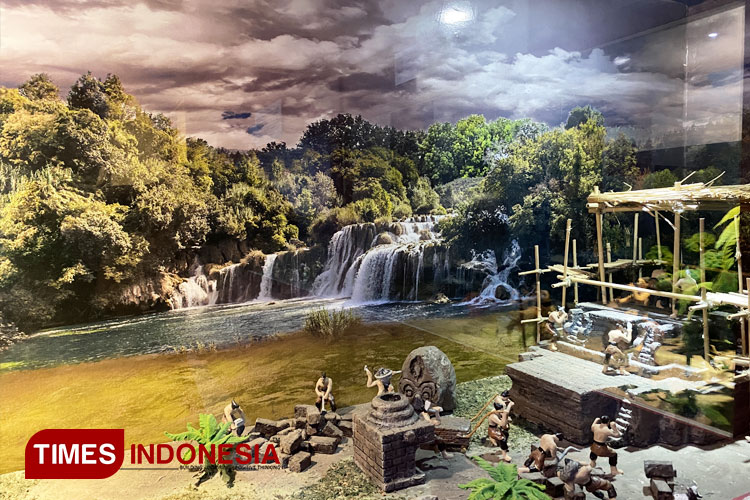TIMES MALAYSIA – Malang a asmall city in East Java has a place which conserv the local history that worth the visit. It is Museum Mpu Purwa which serves as a treasure trove of the region's historical and cultural artifacts.
This museum offers an immersive journey through Malang's ancient past, preserving relics from the Hindu-Buddhist period, the Islamic era, and beyond. Named after Mpu Purwa, an influential figure in Javanese history, the museum celebrates Malang's rich heritage and offers a unique window into its ancient civilizations.
Located at Jalan Soekarno-Hatta No. 210, in the Lowokwaru district of Malang, the museum offers a serene environment for learning and reflection. It frequently hosts educational workshops, guided tours, and interactive seminars aimed at promoting cultural awareness.
Additionally, its role in preserving ancient relics, such as the Prasasti Dinoyo 2 and Arca Ganesha Tikus, positions the museum as a vital institution in safeguarding the cultural history of the Malang region.
A Grand Welcome on the First Floor
Upon entering the museum’s first floor, visitors are immediately greeted by the sight of topeng Malangan, the traditional masks representing Malang’s distinctive culture. These masks are intricately designed, portraying various characters from local folklore and traditional performances.
Next to the masks, a complete set of gamelan instruments stands proudly on display, resonating with the importance of gamelan music in Javanese ceremonies and performances. The gentle sounds of traditional Javanese music play softly in the background, enriching the visitors’ experience and creating a nostalgic atmosphere that transports them back to the glory days of ancient kingdoms.
In-Depth Exhibits on the Second Floor
The museum’s second floor takes visitors deeper into Malang's historical journey, presenting a vast array of artifacts with detailed explanations. One of the standout features of this floor is the collection of miniatures that vividly illustrate the region’s historical timeline, bringing significant events to life.
Each artifact is accompanied by detailed descriptions, providing essential historical context. For tech-savvy visitors, the museum has integrated modern technology, including QR codes that lead to the official museum website, where one can find extended information and further explanations about each exhibit.
A notable attraction on the second floor is the visualization of prehistoric times in Malang. This exhibit showcases the early days of human civilization in the region, highlighting key developments in social and cultural practices.
Through this visual display, visitors can better understand how prehistoric societies evolved and laid the groundwork for the flourishing kingdoms that would later dominate the area.
The Legacy of Mpu Purwa
Museum Mpu Purwa is named after Mpu Purwa, a prominent Buddhist priest and Sthapaka, or high priest, from ancient Javanese civilization. Mpu Purwa was more than just a spiritual leader; he was renowned for his wisdom and was sought after for his guidance in various rites of purification.
He was also the father of Ken Dedes, a legendary figure who became the ancestral mother of Javanese kings. The museum's name reflects the hope that the noble values embodied by Mpu Purwa will inspire visitors to appreciate history and strive for moral excellence.
Key Artifacts: Prasasti Dinoyo 2 and Arca Ganesha Tikus
Among the most significant collections at Museum Mpu Purwa is the Prasasti Dinoyo 2, a stone inscription dating back to 851 AD, which was discovered in 1984 in Dinoyo, Malang. This inscription records an important land grant from Dang Hwan Sang Hiwil from Hujung to Dang Hyang Guru Candik’s hermitage.
It offering insight into the relationship between rulers and religious figures in ancient Java. Though the inscription was found broken due to construction work, it still provides a critical glimpse into Malang’s historical landscape.
Another prized possession is the Arca Ganesha Tikus, a unique Ganesha statue that stands out from others in Indonesia. The pedestal of this statue features a rat motif, a design element commonly found in India but extremely rare in Indonesia.
Additionally, the statue's distinctive bodong rope over the shoulder highlights the artistic style of the Kediri Kingdom. Unlike other Ganesha statues in Indonesia, which typically have a lotus motif at the base, this rat-based design makes the Arca Ganesha Tikus a particularly intriguing artifact for visitors interested in both art and history.
Modern Learning Tools and Visualizations
Museum Mpu Purwa isn’t just about preserving history; it’s also a space for learning and exploration. Through meticulously crafted historical visualizations and displays, the museum provides a deeper understanding of ancient Javanese life and the evolution of its cultural practices.
These engaging visual aids make the museum an educational destination for both casual visitors and history enthusiasts alike. By combining traditional exhibits with modern technology, the museum ensures that learning about history becomes an immersive and interactive experience.
"From ancient inscriptions to unique statues, it’s a must-visit for anyone wanting to dive deep into Malang’s past and appreciate its cultural significance," Sisi, a local visitor said.
Whether you are a history enthusiast, a student, or simply a traveler exploring the wonders of Malang, Museum Mpu Purwa offers a deeply enriching experience that leaves a lasting impression on all who visit. (*)
Artikel ini sebelumnya sudah tayang di TIMES Indonesia dengan judul: Museum Mpu Purwa Malang Holds the Local Cultural Heritage
| Writer | : Khodijah Siti |
| Editor | : Khodijah Siti |

























